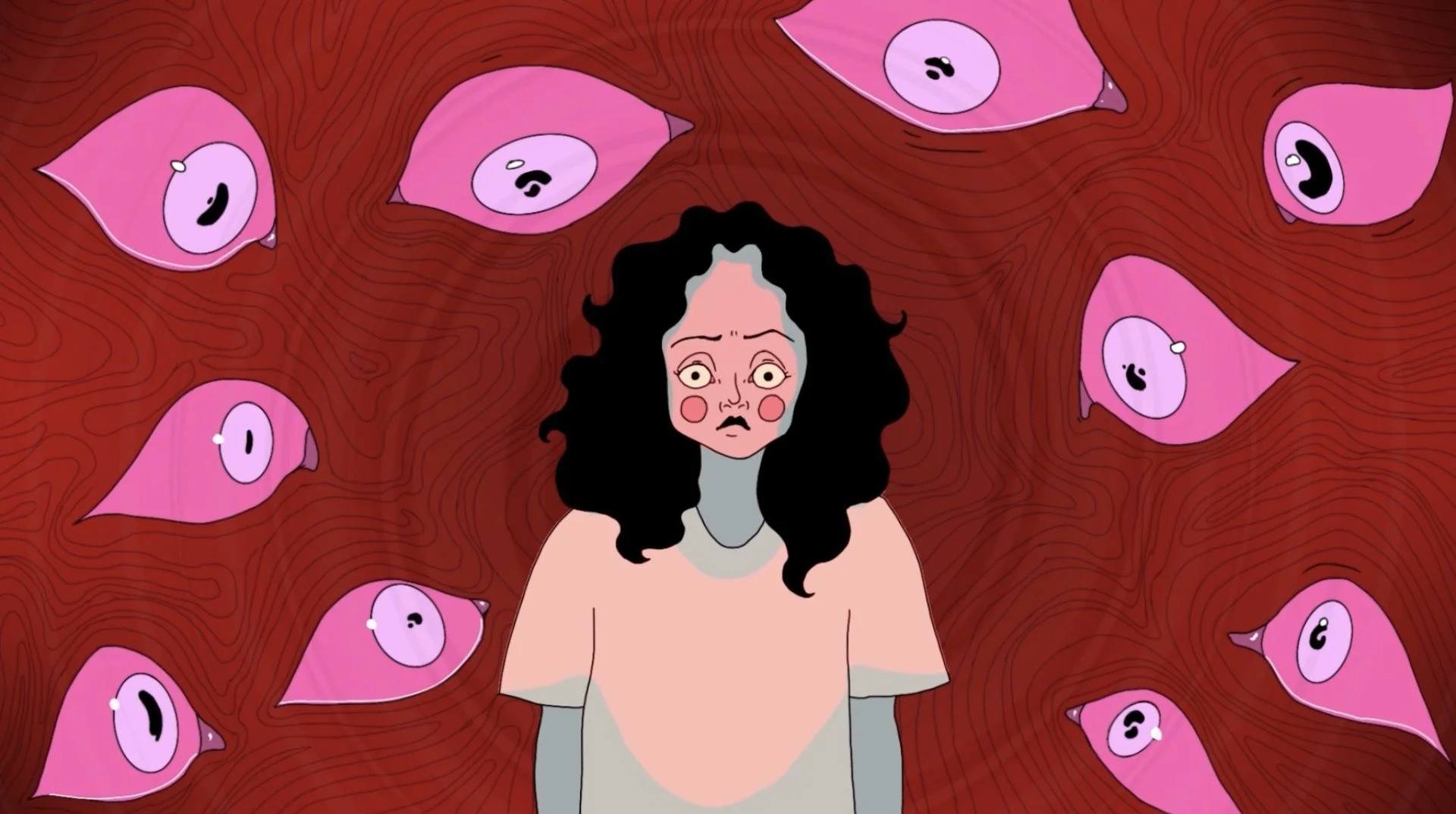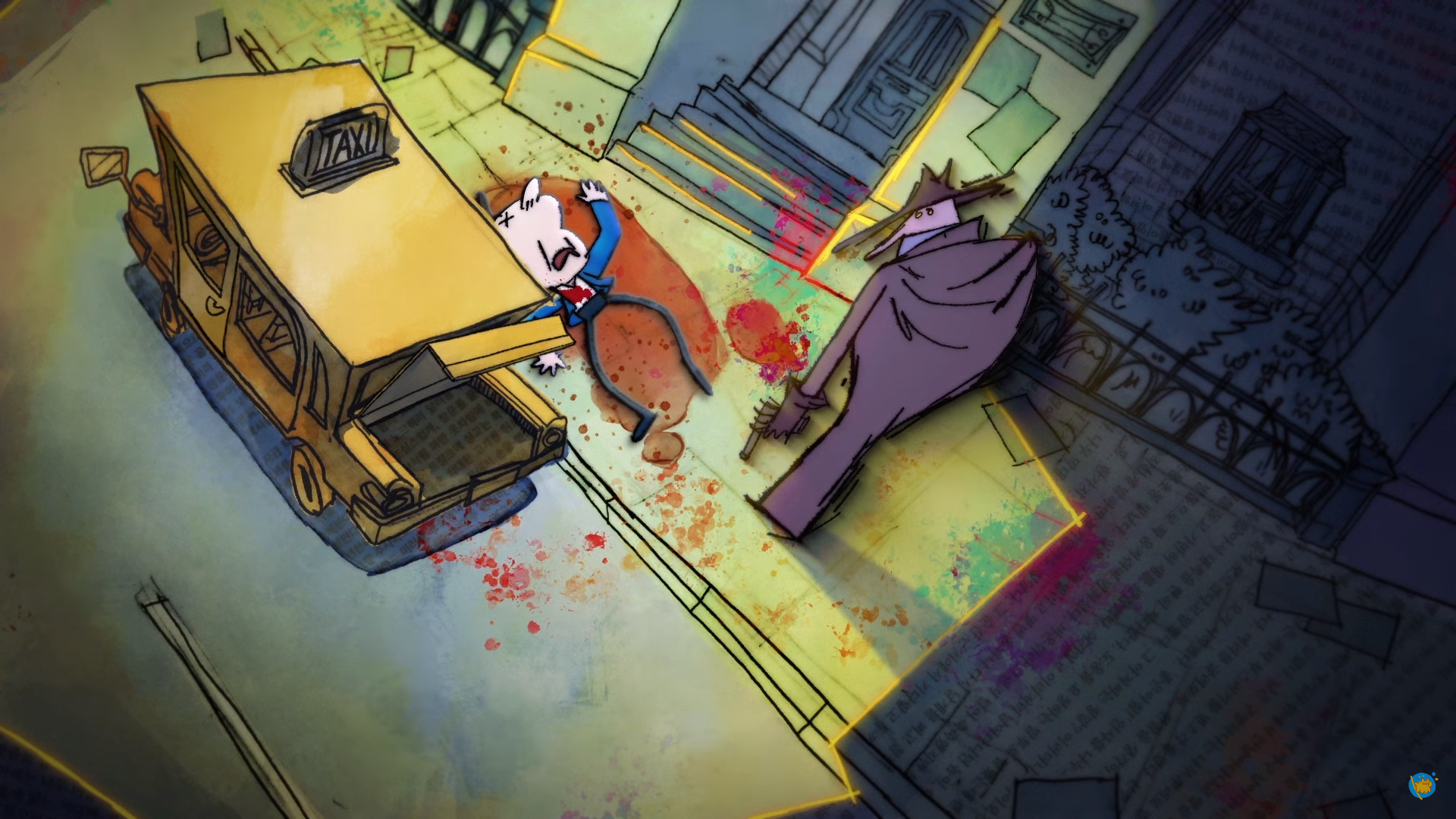The Author
Directed by LUIZ MÁXIMO
Brazil, 2022
Drama, Experimental
A middle-aged writer flirts with death.
Read our interview with Luiz below to learn more about the film.
LUIZ MÁXIMO
Est. Reading Time: 7 Minutes
MARK (M) Tell us a little about yourself - when did you become interested in film and filmmaking?
LUIZ (L) When I was a kid my parents used to work a lot so cartoons and cassette tapes have always kept me company. Living in Brazil, I watched many old things that took a while to get (screen) here at that time. I used to watch all the Disney classics, Looney Tunes and Hanna-Barbera every day on television. By living immersed in this world, I have always illustrated. I started doing it almost every day until people started noticing and complimenting what I was doing. At some point I didn't just want to illustrate what I saw, I needed to tell my own stories. The real interest in live-action only came later when I realized that I was missing important content.
On Visual Style
M I really like your visual style - it’s textured, experimental and playful! Please tell us about your approach to crafting the film's visuals - why did you explore and use both 2D and 3D animation within the film?
L This film arose out of personal anguish that is shared by several Brazilian artists. In 2018, a dismantling of arts and culture began by a new government which made it difficult for some artistic communities to exist. In 2020 the pandemic broke out and worsened the situation. During the pandemic, the government made a list that classified the importance of professionals. It was headed by health professionals which makes perfect sense but everyone who made a living from the arts was at the bottom of the list, at a time where everyone was ‘stuck’ at home consuming art through games, movies etc.
L The movie talks about this situation because William, the main character, is stuck at home feeling anguished and desperate to the point where he starts flirting with death. I wanted to explore that feeling in a visual way in the film. When the character is in the present, I chose to reference Austrian artist Egon Shiele. It portrays the human figure in a lean and expressive way, accentuating bones and musculature. As the character flirts with death, he starts looking for reasons to stay alive. So he remembers moments in life that are related to art. For William, the only time life is bearable is within affection and art. Because of this, we decided to change the visual style every time he recalls different segments of art:
- For theater, animation goes from traditional 2D to 3D.
- For television, we referenced the expressionist artist Josef Fenneker.
- At the party which also includes and references music, we chose Robert Valley, perhaps because I consume a lot of his work in clips of several bands (Gorillaz, Metallica, The Beatles as well as the ‘Rock Band’ video game etc). All of the people who appear at the party are linked to the world of music, and many are Brazilian. For Valley we don't use traditional 2D, we instead use cut-out animation.
- For cinema, we chose Moebius who’s a very important figure in the world of comics and a great influence on modern science-fiction design.
In one scene we also reference Edward Hopper's work to talk more about loneliness. The film explores various materials, animation styles, texturing, finishes and ends up being a great tribute to art and artists.
On Narration
M I would love to learn more about your process of writing the film’s narration - I like the way it drifts between different ideas and thoughts. I think the narration captures the main character’s scattered mind very well. Please tell us about the conception and evolution of the film’s narration - how did it begin, change and grow over time?
L The process of writing this film was a little different from the conventional one. Usually, we know everything that will happen in the story so we can tie everything together little by little. But the way of writing this movie wouldn't work well in the industry, where you have to follow the hierarchy of time and deadlines. I knew the beginning and end of the movie, what I expected and imagined. The path was totally free, it was through discoveries and without haste.
L The narration is almost a poem, a window to the head of a desperate man. As you said, the location needed to oscillate between different ideas and thoughts. First, I searched for texts and poems that looked like what I wanted. Then I would consume things that transported me to an emotional state similar to the main character such as music, movies and books. A process similar to one of the methods for preparing as an actor. This is why it's not a conventional method. The result is more experimental and organic, but it takes time to receive and listen to the stimuli. Sometimes you need to think about the same thing for a while, until the idea pops out of the blue. I mumbled and wrote at the same time. After writing a few blocks, I would read aloud and assess whether the text captured the energy I wanted. I assessed whether the chosen words sounded good when put together. I would sit down and make corrections, repeat the process until I was satisfied.
‘By living immersed in this world, I have always illustrated…At some point I didn't just want to illustrate what I saw, I needed to tell my own stories’
— Luiz Máximo
On Inspiration
M What are some of the films and who are some of the filmmakers that inspire you, and why?
L My favorite movie is Cinema Paradiso (1988). It's not the best movie I've ever seen, but it's certainly the one that moves me the most. I think it has a lot to do with my love relationship with cinema. You can see a reference to the film in the movie scene of The Author, the lion's head projecting the film in the back of the room.
I have a few names of filmmakers who inspire me, who have done things that I see myself exploring in the future. The dream relationship in David Lynch movies. To this day I remember the final episode of the second season of Twin Peaks (1990-1991), it marked me a lot. I like the visual exploration in Satoshi Kon's films - Paprika (2006) is a feast for those looking for visual stimulation.
There are several others but the last ones I will mention are Jorge Furtado and Guel Arraes. Both are able to tell stories and build typically Brazilian characters. Highlights are O Auto da Compadecida (2000) and O Homem que Copiava (2003).
Cinema Paradiso (1988) by Gilsepe Tornatore
On The Future
M What are you planning to make next?
L I'm finalizing my participation in projects by other filmmakers. Perlimps (2022) by Alê Abreu (who made The Boy and the World in 2013) and Chef Jack, The Adventurous Cook (first animated feature film in my city) by Artur Henrique and Nimuendajú by Tania Anaya are some of these projects. But I have plans for new personal projects, not only with audiovisual, but with other media that allow me to experiment and tell stories.
Mark’s Final Thoughts
The way Luiz coalesces various animation styles and references demonstrates his strong instincts as a filmmaker - the visuals are constantly changing and shifting in style yet nothing feels out of place on screen. He recognizes that voice-over narration provides an important anchor point of clarity in a sonically and visually sporadic narrative. I didn’t mention it in our interview but I also really like the choices and changes in music.
Must admit I didn't immediately recognise a few artistic allusions so it was great for Luiz to break down and specify all of the creative references throughout the film. Like many, I love Edward Hopper's work so I enjoyed seeing the recreation of his 'Night Windows' painting on screen.
And it’s awesome to hear that Luiz is working on the first animated feature film in his city - I look forward to following his work and can’t wait to see his new personal projects.
Want to Learn More? Click here for Luiz’s thoughts about renowned Brazilian poet Ferreila Gullar as well as the importance of the narrator’s brooding tone.
The founder of Hommage, Mark Shaba published this interview on 09.06.2022 Mark is a filmmaker from Victoria, Australia. He respectfully acknowledges the past and present traditional owners of the land on which he creates, promotes and screens art, the Wurundjeri people of the Kulin nation who are the custodians.


















